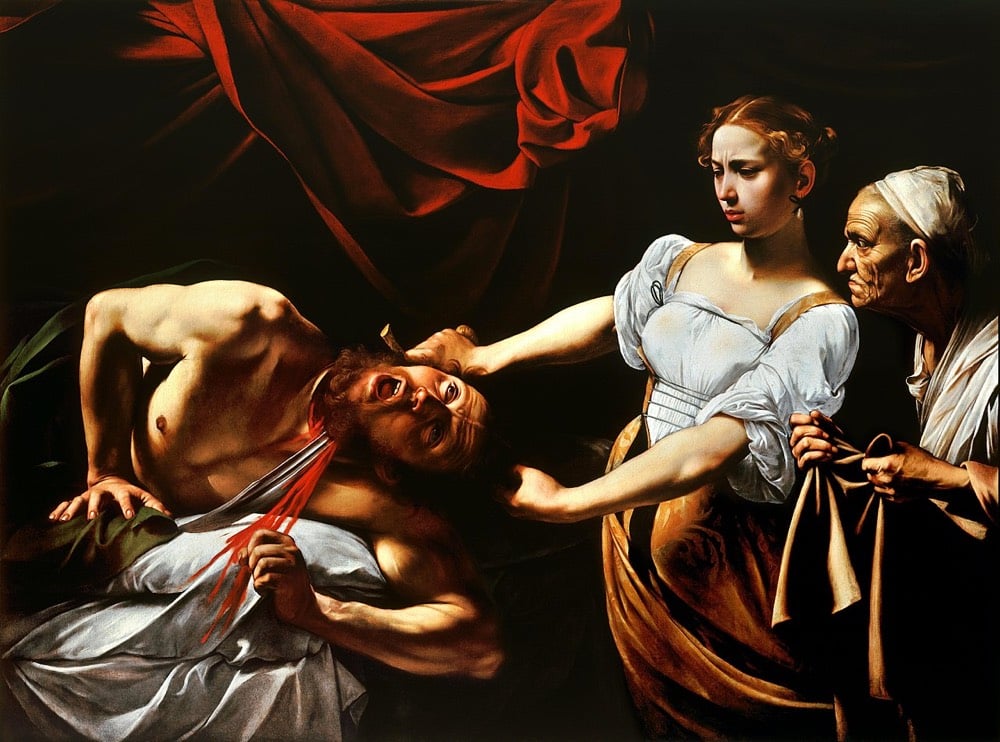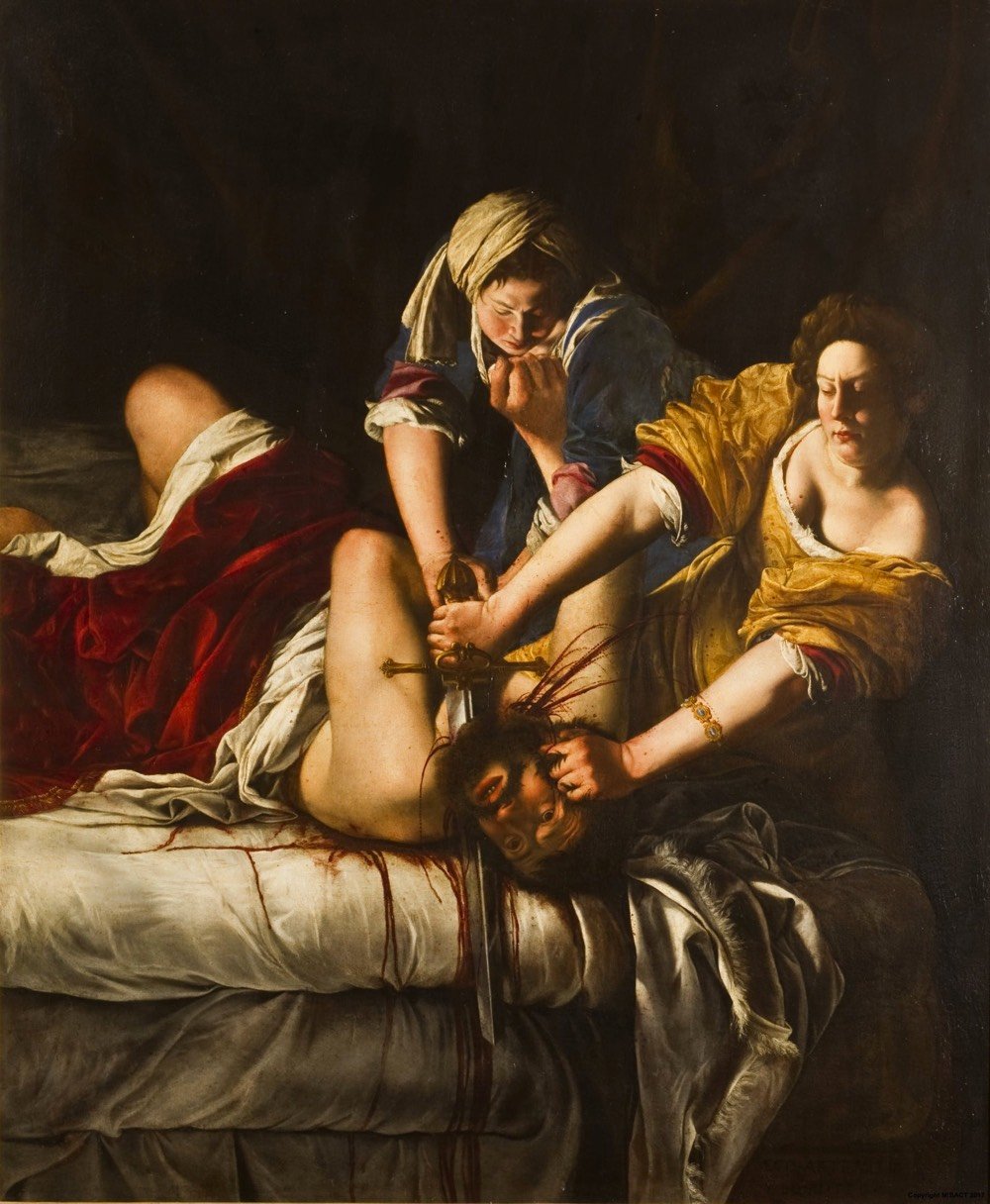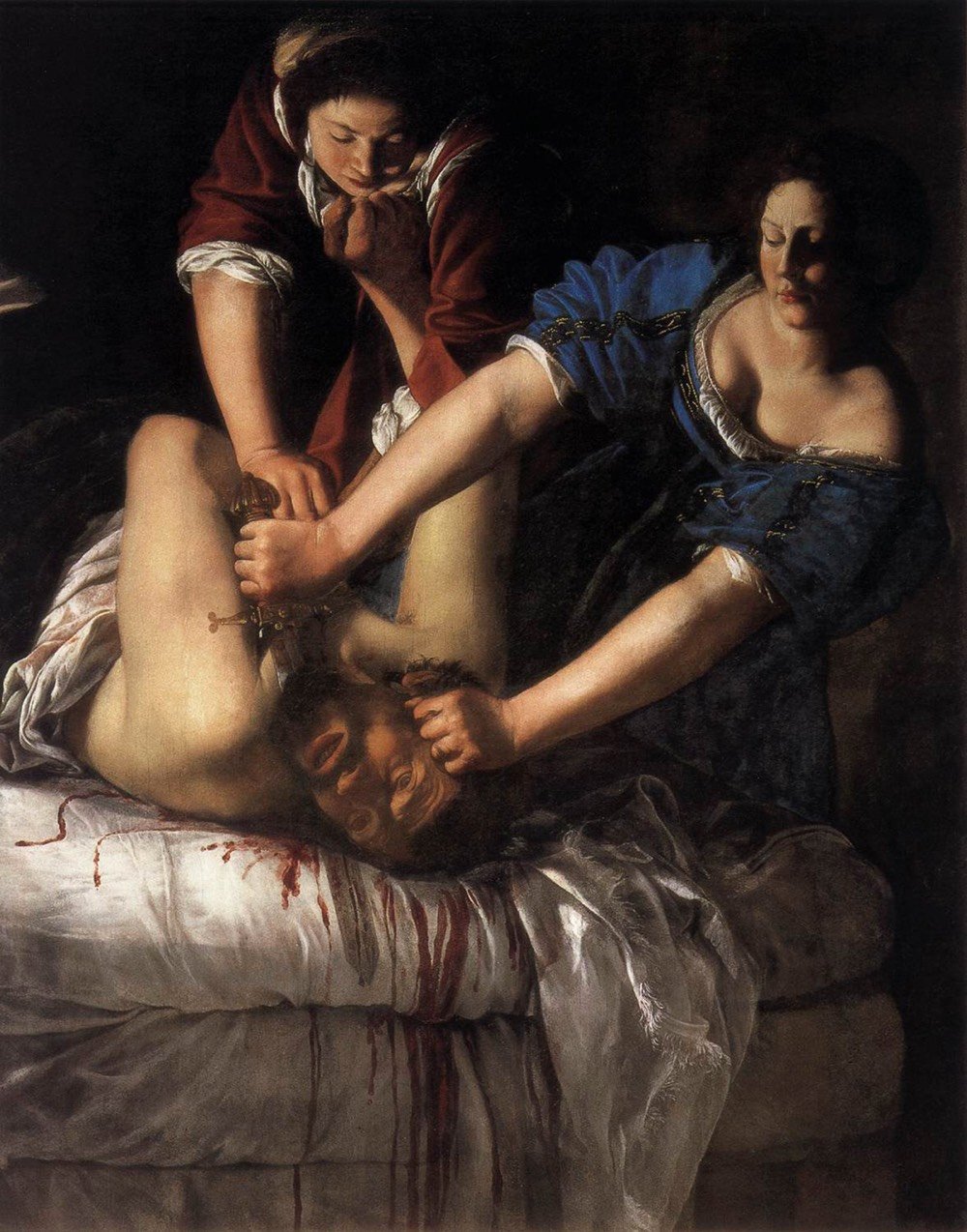Artemisia Gentileschi’s Judith Slaying Holofernes
From the Book of Judith comes the tale of Judith beheading Holofernes.
In the story, Judith, a beautiful widow, is able to enter the tent of Holofernes because of his desire for her. Holofernes was an Assyrian general who was about to destroy Judith’s home, the city of Bethulia. Overcome with drink, he passes out and is decapitated by Judith; his head is taken away in a basket.
The story has been a rich vein for artists to explore throughout the centuries. Michelangelo worked it into the Sistine chapel, Botticelli & Rubens painted it, and Italian painter Caravaggio’s rendition is probably the most well-known:

In Lyta Gold and Brianna Rennix’s entertaining ranking of 10 paintings of Judith beheading Holofernes, they put the Caravaggio at #2, with the top slot going to a painter who worked a generation later, Artemisia Gentileschi:

As it was from a young age in her father’s studio, her mastery is readily apparent but some context is helpful to appreciate the painting more fully. Throughout her career, Gentileschi featured women, often from mythology or the Bible, as primary subjects with real agency in her paintings. But the story of Judith and Holofernes likely appealed to her for another reason as well. When she was 17 or 18, Gentileschi was raped by her painting instructor, Agostino Tassi. He was convicted at trial, with Gentileschi having to testify in detail about the assault and submitting to torture to ensure she was telling the truth:
During the trial, she was subjected to sibille, a process in which ropes were tied to her fingers and tightened progressively. The practice was meant to divine whether or not she was telling the truth. After seven months in court, the judged finally ruled in Gentileschi’s favor. Tassi was sentenced to five years in prison, but never actually served time.
There appears to be some scholarly disagreement about this, but many believe that Judith Slaying Holofernes, first painted around the time of the trial, was a self portrait, with Gentileschi painting herself as Judith and Tassi as Holofernes. More recently, some critics & historians have tried to draw emphasis away from her assault in the interpretation of this and other paintings, focusing on her growing proficiency and not her victimhood. Whatever her intent at the time, the painting stands as a powerful statement and the young artist was able to continue painting, eventually becoming one of the most famous and sought-after artists in Europe.
By the time Gentileschi made Self-Portrait as the Allegory of Painting, she’d received perhaps the greatest honor bestowed upon the era’s painters: induction into the Accademia del Disegno. She was the first woman to receive the distinction and, according to the 2007 catalogue for the exhibition “Italian Women Artists: From Renaissance to Baroque,” it changed the course of her life.
With this badge of honor, Gentileschi could buy paints and supplies without a man’s permission, travel by herself, and even sign contracts. In other words, through painting, she had gained freedom. Gentileschi would go on to separate from her husband and live and work independently, primarily in Naples and London, for the rest of her life. All the while, she supported her two daughters, who also went on to become painters.
After her death, Gentileschi’s influence waned and her contributions were nearly forgotten. It was only in the 20th century that her work started to be recognized again. If you’d like to see Judith Slaying Holofernes in person, there are two copies of the painting. The earlier one, painted around the time of the trial, is housed at the Museo di Capodimonte in Naples:

A copy painted a decade later (the one shown above, with Judith in yellow) is on display at the Gallerie degli Uffizi in Florence.





Stay Connected